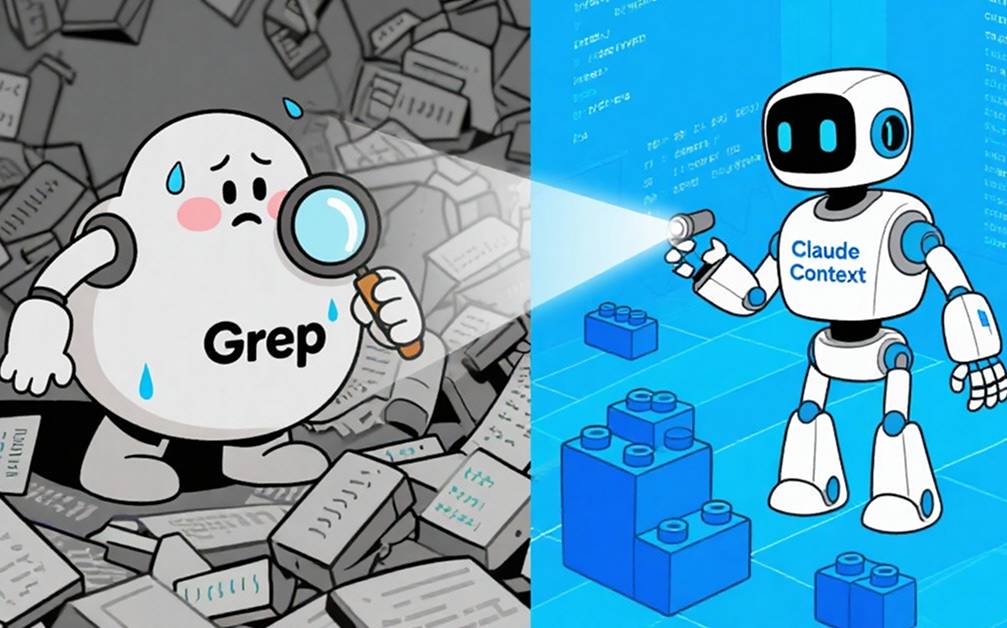LangChain vs LangGraph: A Developer's Guide to Choosing Your AI Frameworks
When building with large language models (LLMs), the framework you choose has a huge impact on your development experience. A good framework streamlines workflows, reduces boilerplate, and makes it easier to move from prototype to production. A poor fit can do the opposite, adding friction and technical debt.
Two of the most popular options today are LangChain and LangGraph — both open source and created by the LangChain team. LangChain focuses on component orchestration and workflow automation, making it a good fit for common use cases like retrieval-augmented generation (RAG). LangGraph builds on top of LangChain with a graph-based architecture, which is better suited for stateful applications, complex decision-making, and multi-agent coordination.
In this guide, we’ll compare the two frameworks side by side: how they work, their strengths, and the types of projects they’re best suited for. By the end, you’ll have a clearer sense of which one makes the most sense for your needs.
LangChain: Your Component Library and LCEL Orchestration Powerhouse
LangChain is an open-source framework designed to make building LLM applications more manageable. You can think of it as the middleware that sits between your model (say, OpenAI’s GPT-5 or Anthropic’s Claude) and your actual app. Its main job is to help you chain together all the moving parts: prompts, external APIs, vector databases, and custom business logic.
Take RAG as an example. Instead of wiring everything from scratch, LangChain gives you ready-made abstractions to connect an LLM with a vector store (like Milvus or Zilliz Cloud), run semantic search, and feed results back into your prompt. Beyond that, it offers utilities for prompt templates, agents that can call tools, and orchestration layers that keep complex workflows maintainable.
What makes LangChain stand out?
Rich component library – Document loaders, text splitters, vector storage connectors, model interfaces, and more.
LCEL (LangChain Expression Language) orchestration – A declarative way to mix and match components with less boilerplate.
Easy integration – Works smoothly with APIs, databases, and third-party tools.
Mature ecosystem – Strong documentation, examples, and an active community.
LangGraph: Your Go-To for Stateful Agent Systems
LangGraph is a specialized extension of LangChain that focuses on stateful applications. Instead of writing workflows as a linear script, you define them as a graph of nodes and edges — essentially a state machine. Each node represents an action (like calling an LLM, querying a database, or checking a condition), while the edges define how the flow moves depending on the results. This structure makes it easier to handle loops, branching, and retries without your code turning into a tangle of if/else statements.
This approach is especially useful for advanced use cases such as copilots and autonomous agents. These systems often need to keep track of memory, handle unexpected results, or make decisions dynamically. By modeling the logic explicitly as a graph, LangGraph makes these behaviors more transparent and maintainable.
Core features of LangGraph include:
Graph-based architecture – Native support for loops, backtracking, and complex control flows.
State management – Centralized state ensures context is preserved across steps.
Multi-agent support – Built for scenarios where multiple agents collaborate or coordinate.
Debugging tools – Visualization and debugging via LangSmith Studio to trace graph execution.
LangChain vs LangGraph: Technical Deep Dive
Architecture
LangChain uses LCEL (LangChain Expression Language) to wire components together in a linear pipeline. It’s declarative, readable, and great for straightforward workflows like RAG.
# LangChain LCEL orchestration example
from langchain.prompts import ChatPromptTemplate
from langchain.chat_models import ChatOpenAI
prompt = ChatPromptTemplate.from_template("Please answer the following question: {question}")
model = ChatOpenAI()
# LCEL chain orchestration
chain = prompt | model
# Run the chain
result = chain.invoke({"question": "What is artificial intelligence?"})
LangGraph takes a different approach: workflows are expressed as a graph of nodes and edges. Each node defines an action, and the graph engine manages state, branching, and retries.
# LangGraph graph structure definition
from langgraph.graph import StateGraph
from typing import TypedDict
class State(TypedDict):
messages: list
current_step: str
def node_a(state: State) -> State:
return {"messages": state["messages"] + ["Processing A"], "current_step": "A"}
def node_b(state: State) -> State:
return {"messages": state["messages"] + ["Processing B"], "current_step": "B"}
graph = StateGraph(State)
graph.add_node("node_a", node_a)
graph.add_node("node_b", node_b)
graph.add_edge("node_a", "node_b")
Where LCEL gives you a clean linear pipeline, LangGraph natively supports loops, branching, and conditional flows. This makes it a stronger fit for agent-like systems or multi-step interactions that don’t follow a straight line.
State Management
LangChain: Uses Memory components for passing context. Works fine for simple multi-turn conversations or linear workflows.
LangGraph: Uses a centralized state system that supports rollbacks, backtracking, and detailed history. Essential for long-running, stateful apps where context continuity matters.
Execution Models
| Feature | LangChain | LangGraph |
|---|---|---|
| Execution Mode | Linear orchestration | Stateful (Graph) Execution |
| Loop Support | Limited Support | Native Support |
| Conditional Branching | Implemented via RunnableMap | Native Support |
| Exception Handling | Implemented via RunnableBranch | Built-in Support |
| Error Processing | Chain-style Transmission | Node-level Processing |
Real-World Use Cases: When to Use Each
Frameworks aren’t just about architecture — they shine in different situations. So the real question is: when should you reach for LangChain, and when does LangGraph make more sense? Let’s look at some practical scenarios.
When LangChain Is Your Best Choice
1. Straightforward Task Processing
LangChain is a great fit when you need to transform input into output without heavy state tracking or branching logic. For example, a browser extension that translates selected text:
# Implementing simple text translation using LCEL
from langchain.prompts import ChatPromptTemplate
from langchain.chat_models import ChatOpenAI
prompt = ChatPromptTemplate.from_template("Translate the following text to English: {text}")
model = ChatOpenAI()
chain = prompt | model
result = chain.invoke({"text": "Hello, World!"})
In this case, there’s no need for memory, retries, or multi-step reasoning — just efficient input-to-output transformation. LangChain keeps the code clean and focused.
2. Foundation Components
LangChain provides rich basic components that can serve as building blocks for constructing more complex systems. Even when teams build with LangGraph, they often rely on LangChain’s mature components. The framework offers:
Vector store connectors – Unified interfaces for databases like Milvus and Zilliz Cloud.
Document loaders & splitters – For PDFs, web pages, and other content.
Model interfaces – Standardized wrappers for popular LLMs.
This makes LangChain not only a workflow tool but also a reliable component library for larger systems.
When LangGraph Is the Clear Winner
1. Sophisticated Agent Development
LangGraph excels when you’re building advanced agent systems that need to loop, branch, and adapt. Here’s a simplified agent pattern:
# Simplified Agent system example
def agent(state):
messages = state["messages"]
# Agent thinks and decides next action
action = decide_action(messages)
return {"action": action, "messages": messages}
def tool_executor(state):
# Execute tool calls
action = state["action"]
result = execute_tool(action)
return {"result": result, "messages": state["messages"] + [result]}
# Build Agent graph
graph = StateGraph()
graph.add_node("agent", agent)
graph.add_node("tool_executor", tool_executor)
graph.add_edge("agent", "tool_executor")
graph.add_edge("tool_executor", "agent")
Example: GitHub Copilot X’s advanced features perfectly demonstrate LangGraph’s agent architecture in action. The system understands developer intent, breaks complex programming tasks into manageable steps, executes multiple operations in sequence, learns from intermediate results, and adapts its approach based on what it discovers along the way.
2. Advanced Multi-Turn Conversation Systems
LangGraph’s state management capabilities make it very suitable for building complex multi-turn conversation systems:
Customer service systems: Capable of tracking conversation history, understanding context, and providing coherent responses
Educational tutoring systems: Adjusting teaching strategies based on students’ answer history
Interview simulation systems: Adjusting interview questions based on candidates’ responses
Example: Duolingo’s AI tutoring system showcases this perfectly. The system continuously analyzes each learner’s response patterns, identifies specific knowledge gaps, tracks learning progress across multiple sessions, and delivers personalized language learning experiences that adapt to individual learning styles, pace preferences, and areas of difficulty.
3. Multi-Agent Collaboration Ecosystems
LangGraph natively supports ecosystems where multiple agents coordinate. Examples include:
Team collaboration simulation: Multiple roles collaboratively completing complex tasks
Debate systems: Multiple roles holding different viewpoints engaging in debate
Creative collaboration platforms: Intelligent agents from different professional domains creating together
This approach has shown promise in research domains like drug discovery, where agents model different areas of expertise and combine results into new insights.
Making the Right Choice: A Decision Framework
| Project Characteristics | Recommended Framework | Why |
|---|---|---|
| Simple One-Time Tasks | LangChain | LCEL orchestration is simple and intuitive |
| Text Translation/Optimization | LangChain | No need for complex state management |
| Agent Systems | LangGraph | Powerful state management and control flow |
| Multi-Turn Conversation Systems | LangGraph | State tracking and context management |
| Multi-Agent Collaboration | LangGraph | Native support for multi-node interaction |
| Systems Requiring Tool Usage | LangGraph | Flexible tool invocation flow control |
Conclusion
In most cases, LangChain and LangGraph are complementary, not competitors. LangChain gives you a solid foundation of components and LCEL orchestration — great for quick prototypes, stateless tasks, or projects that just need clean input-to-output flows. LangGraph steps in when your application outgrows that linear model and requires state, branching, or multiple agents working together.
Choose LangChain if your focus is on straightforward tasks like text translation, document processing, or data transformation, where each request stands on its own.
Choose LangGraph if you’re building multi-turn conversations, agent systems, or collaborative agent ecosystems where context and decision-making matter.
Mix both for the best results. Many production systems start with LangChain’s components (document loaders, vector store connectors, model interfaces) and then add LangGraph to manage stateful, graph-driven logic on top.
Ultimately, it’s less about chasing trends and more about aligning the framework with your project’s genuine needs. Both ecosystems are evolving rapidly, driven by active communities and robust documentation. By understanding where each fits, you’ll be better equipped to design applications that scale — whether you’re building your first RAG pipeline with Milvus or orchestrating a complex multi-agent system.
- LangChain: Your Component Library and LCEL Orchestration Powerhouse
- LangGraph: Your Go-To for Stateful Agent Systems
- LangChain vs LangGraph: Technical Deep Dive
- Architecture
- State Management
- Execution Models
- Real-World Use Cases: When to Use Each
- When LangChain Is Your Best Choice
- When LangGraph Is the Clear Winner
- Making the Right Choice: A Decision Framework
- Conclusion
On This Page
Try Managed Milvus for Free
Zilliz Cloud is hassle-free, powered by Milvus and 10x faster.
Get StartedLike the article? Spread the word



